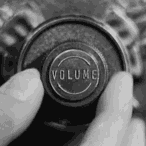-
Posts
2076 -
Joined
-
Last visited
-
Days Won
10
snafu last won the day on December 22 2023
snafu had the most liked content!
About snafu

Profile Information
-
Gender
Male
Recent Profile Visitors
24929 profile views
snafu's Achievements
-
What you didn't tell us is what kind of vehicle this is. Many, and I mean many, late model vehicles have all kinds of challenges facing you in the digital domain that must be undone or normalized before installing new gear - equalization contours designed to make $3 speakers sound like $30 ones, fully active systems with each component having a narrow bandwidth of operation and / or delay, multiple position contours overlaid on top one another, etc. In addition, you could have some impedance mis-matching with your interface which could cause frequency response irregularities, etc. So, share a bit more.
-
I began selling High Output alternators in 1989 - nearly 30 years ago. In that time, I've done business with numerous companies. I've sold, installed, and analyzed hundreds of HOAs. Mechman stands head and shoulders above the others. The product is bullet proof. The customer service top notch. The fit and finish exceptional. You always get what you pay for with Mechman and there's never a question about that. Mechman became an SMD Partner in September of 2010. CE Auto Electric Supply became a Mechman dealer in February of 2012. In that time, I can tell you without hesitation that Mechman has been an exemplary partner to both SMD and CEAES in every sense of the word. In a category full of me too product wrapped in marketing hyperbole, Mechman products deliver. Matt - we're damn glad to have ya'!
-

SPOOKTACULAR DEALS
snafu replied to Second Skin's topic in Second Skin Sound Deadening and Automotive Insulation!
Tha'ts a really good deal! Wow. -

Broke? We can help!
snafu replied to Second Skin's topic in Second Skin Sound Deadening and Automotive Insulation!
I don't necessarily agree. Sound Deadening can be a significant investment for some of the serious builds at SMD! I think this is a great option and commend Second Skin for offering it. -

!!!Spl-Lab Prices!!!
snafu replied to dr.Gonzo's topic in SPL Lab - caraudio and racing measuring devices
These seem like very reasonable prices! -
Matt (the owner of Mechman) informed me this morning that his home has burned to the ground with "everything I own in it." Good grief man! This is no way to start the new year. Matt has been a loyal SMD Partner since 2011 and in that time has gone out of his way to be the best Partner he can be. Mechman has also sponsored System of the Month every single time I've asked including this last month! I've known Matt personally for some time now and he is a true gem in a sea full of competitors who make their living over-promising and under-delivering. Personally, I've bought, sold, and installed high output alternators since before many of you were born - dating all the way back to 1989. In that time, Mechman has been the true standout. I always tell my customers what makes Mechman different is that they make a great product AND they run their company. You guys all know that I'm a super stickler for what we offer at CE Auto Electric Supply and we're proud to be a Mechman dealer. Damn proud. So, if you're shopping for an alternator for your vehicle, give Mechman a shot. You won't be sorry. Any help we can offer would be greatly appreciated as Matt rebuilds. Also, please be patient with Matt over the next month or two given that his life has just been turned upside down.
-

10 Elite 370A Alternators!@
snafu replied to MECHMAN's topic in MechMan Alternators and 12v Accessories
Wow. I can't wait to see the ingenuity on this install! -
Appearing on Inside West Coast Customs - Wow! This is quite an achievement. Congratulations Ken, Sue, Eric, and team! I was able to watch the show last night off of my DVR and Ken and Eric did a great job. The Vee-Dub came out pretty awesome. If you haven't seen the episode yet, be sure and set your DVR to record it. On another note, WCC has really transformed over the years. If you're a fab junkie, this facility has it. I was amazed at the skill demonstrated on this build.









